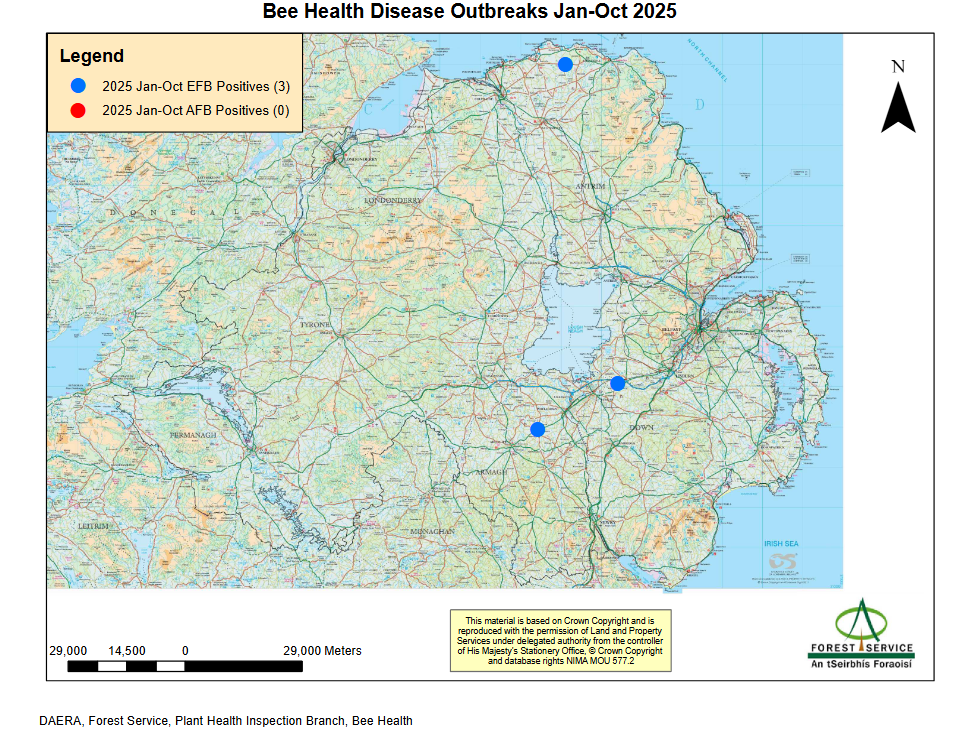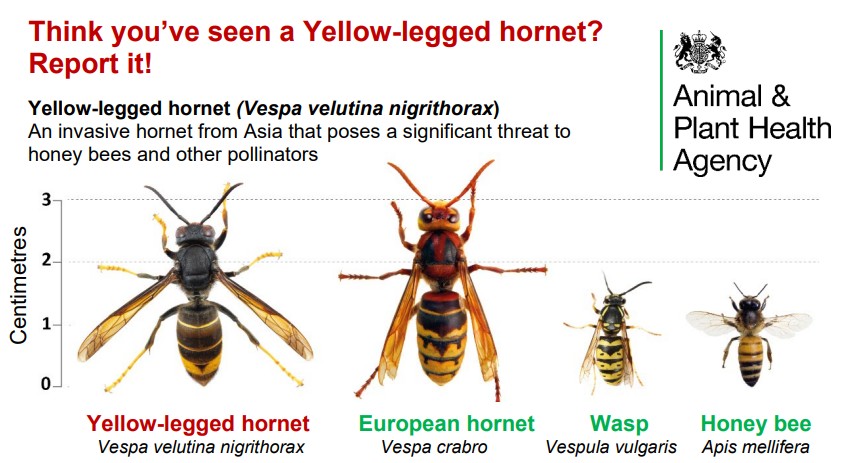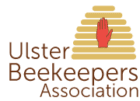Honey Bee Health Programme in Northern Ireland
The department implements legislation relating to the health and welfare of bees. The annual work programme implemented by bee inspectors includes an annual survey for notifiable diseases, follow-up inspections after disease outbreaks and checks on imports.
https://www.daera-ni.gov.uk/articles/bee-health
Surveillance Programme in the Republic of Ireland
The Honey Bee Health Surveillance Programme provides a disease diagnostic service for beekeepers. It assists beekeepers with the detection of pests and diseases in the colony even at low levels of infection or infestation.
https://www.gov.ie/en/service/fd522-honey-bee-health-surveillance-programme/
Varroa
Since its discovery in England in 1992 the parasitic mite, Varroa destructor, has spread to infest colonies of honey bees throughout the UK. Its management has now become a routine and essential part of bee husbandry. The development of strains of mites resistant to treatments used against them poses new challenges to beekeepers.
For more information check out Beebases leaflet on managing Varroa
Foulbrood Disease of Honey Bees
Foulbrood
The term ‘foulbrood’ covers two diseases of honey bee larvae, one known as American foulbrood (AFB) and the other European foulbrood (EFB).
American foulbrood
Notifiable Disease if suspected please contact Daera in NI or Health Surveillance Programme in ROI – links at top of page.
American foulbrood is caused by a spore-forming bacterium Paenibacillus larvae. Young honey bee larvae become infected when they consume P. larvae spores in their food. The spores germinate in the gut; bacteria then move into the gut tissues, where they multiply enormously in number. Infected larvae normally die after their cells are sealed. Millions of infective spores are formed in their remains, which dry to form ‘scales’ that adhere closely to the cell wall and cannot easily be removed by bees. Consequently, brood combs from infected colonies are inevitably severely contaminated with bacterial spores. If the scales go unnoticed and infected combs are subsequently used or moved from colony to colony during routine beekeeping management, then the infection has the potential to spread quickly.
The spores are very resistant to disinfectant and to extremes of heat and cold. They retain their powers of germination for many years in honey, in old combs kept in store or in derelict hives, skeps or boxes. Once a colony is infected the disease will usually progress until most of the brood is affected. The colony then becomes unable to replace the ageing adult bee population,
causing it to become weakened and, finally, to die out. The disease may develop for months before the colony succumbs. Death may occur at any time of the year.
For more information check out Beebases leaflet on Foulbrood
European foulbrood
Notifiable Disease if suspected please contact Daera in NI or Health Surveillance Programme in ROI – links at top of page.
European foulbrood is caused by the bacterium Melissococcus plutonius. The bacteria multiply in the mid-gut of an infected larva, competing with the larva for its food. They remain in the gut and do not invade the larval tissue; larvae that die from the disease do so because they have been starved of food. This normally occurs shortly before their cells are due to be sealed.
For more information check out Beebases leaflet on Foulbrood

Vairimorpha (Nosema)
The microsporidian genera Nosema and Vairimorpha comprise a clade described from insects. Currently, the genus Nosema is defined as having a dimorphic life cycle characterized by diplokaryotic stages and diplosporoblastic sporogony with two functionally and morphologically distinct spore types (“early” or “primary” and “environmental”).
The Vairimorpha life cycle, in addition to a Nosema-type diplokaryotic sporogony, includes an octosporoblastic sporogony producing eight uninucleate spores (octospores) within a sporophorous vesicle. Molecular phylogeny, however, has clearly demonstrated that the genera Nosema and Vairimorpha, characterized by the absence or presence of uninucleate octospores, respectively, represent two polyphyletic taxa, and that octosporogony is turned on and off frequently within taxa, depending on environmental factors such as host species and rearing temperature.
In addition, recent studies have shown that both branches of the Vairimorpha-Nosema clade contain species that are uninucleate throughout their life cycle. The SSU rRNA gene sequence data reveal two distinct clades, those closely related to Vairimorpha necatrix, the type species for the genus Vairimorpha, and those closely related to Nosema bombycis, the type species for the genus Nosema. Here, we redefine the two genera, giving priority to molecular character states over those observed at the developmental, structural or ultrastructural levels and present a list of revised species designations. Using this approach, a series of species are renamed (combination novum) and members of two genera, Rugispora and Oligosporidium, are reassigned to Vairimorpha because of their phylogenetic position. Moreover, the family Nosematidae is redefined and includes the genera Nosema and Vairimorpha comprising a monophyletic lineage of Microsporidia.
For more information check out Beebases leaflet
Chronic bee paralysis virus
Chronic bee paralysis virus (CBPV) is rarely found infecting honey bees. Colonies may carry CBPV without showing symptoms. Symptoms, when present (Figures 13a and 13b), may include bees crawling on the ground outside the hive entrance, vigorous trembling of bees and hairless or bloated abdomens caused by distension of the honey sac with liquid.
For more information check out Beebases leaflet
Sacbrood
Sacbrood is a very common viral disease affecting brood. In most diseased colonies relatively few larvae are visibly affected and it rarely causes measurable harm. However, the signs of sacbrood can sometimes be mistaken for those of AFB. Disease signs – Larvae that have died from sacbrood resemble fluid-filled sacs, stretched on their backs with their heads towards the top of their cells. Adult worker bees eventually uncap them. Diseased larvae turn from the normal pearly-white colour to pale yellow and the head curls up as the body dries to a thin, dark brown scale lying along the bottom wall of the cell. These are often referred to as ‘Chinese Slippers’.
The scale of a sacbrood-infected larva has a distinctive gondola shape and is easily removed in one piece from its cell using a matchstick. Treatment and control – There is no specific treatment for sacbrood. When much of the brood is obviously affected, the queen should be replaced with a colony showing no signs of the disease. Combs can be re-used; any sacbrood virus present on them becomes non-infectious within a few weeks.
Chalkbrood
Chalkbrood is an extremely common brood disease caused by the fungus Ascosphaera apis. The thread-like, vegetative growths (‘hyphae’) of the fungus invade the body tissues of infected larvae, killing them after they have been capped over in their cells.
Disease signs – Adult bees usually tear down the brood cell cappings to remove the dead larvae. These appear as hard, chalky-white or mottled grey remains (‘mummies’) lying along the length of the cell. Infected larvae often take on the hexagonal shape of the cell itself before shrinking in size, at which point the bees are able to remove them from the comb. They are often noticeable on the hive floor or at the hive entrance.
Larvae affected by chalkbrood may release millions of spores that all have a sticky coating, enabling them to adhere to combs and to adult bees. These are the dormant phase of the fungus and can remain infectious for three years or more.
Asian Hornet
The Northern Ireland Environment Agency (NIEA) has successfully completed the safe and controlled removal of an Asian Hornet nest in Dundonald today (18 October), close to the location of the first reported sighting on 10 October.
This is the first occurrence of such a nest in Northern Ireland. The Asian Hornet poses a significant threat to honeybees, native insects, pollinators and local ecosystems, as well as crop production which relies on pollinators.
The operation was led by NIEA officers (Invasive Non-Native Species Team), using the services of a suitably trained pest control company, with advice provided by the UK Animal and Plant Health Agency (APHA) and on the ground support from an official from the National Biodiversity Data Centre in Waterford through the Shared Island Biosecurity and Invasive Species Initiative.
Surveillance will continue in the area to monitor any Asian Hornet activity.
NIEA urges continued vigilance amongst the public and beekeeping community, and reporting of any suspected sightings via the Asian Hornet Watch app or CEDaR.
Asian Hornet Watch – For Android
Asian Hornet Watch – For Apple

Want to send samples to be AFBI to check your bees health?
Download our advice leaflet on sample taking here
Download the AFBI Lab submission form here
